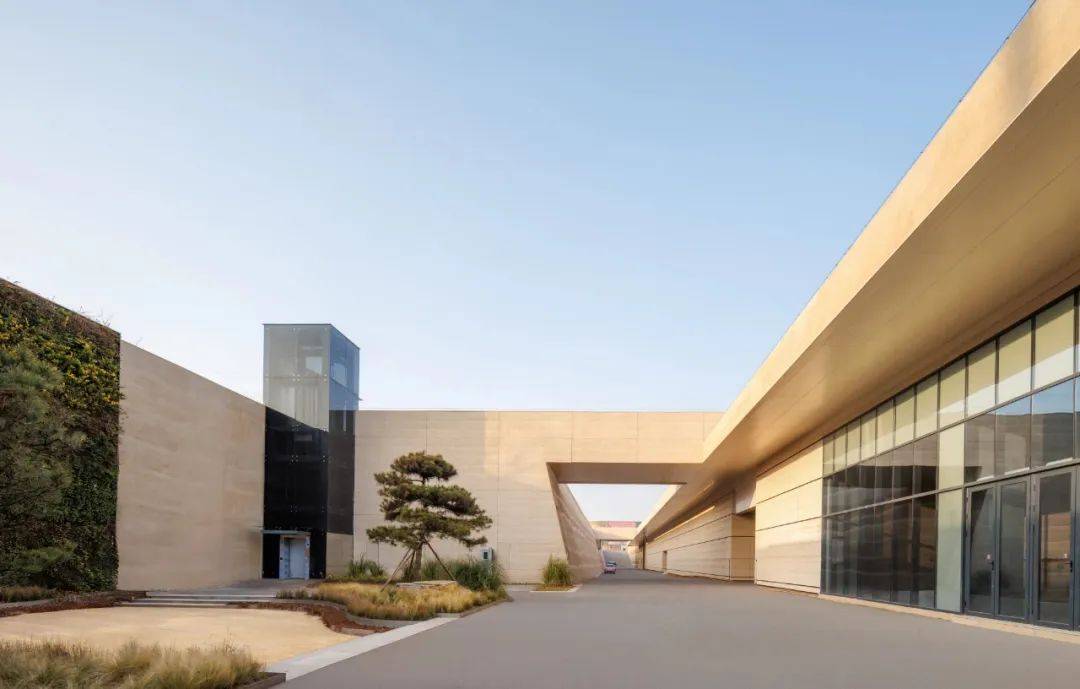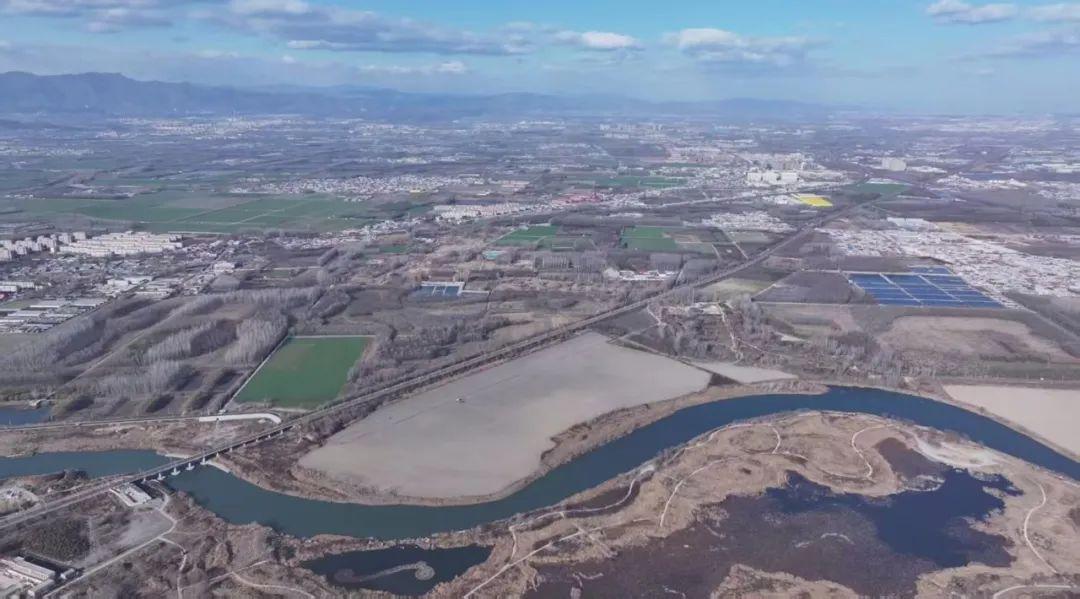
What was the scene like for a “three-bedroom, one-living-room” apartment 5,000 years ago?
The Dahe Village Ruins in Zhengzhou, Henan, which was discovered in 1964, dates back to 6,800 to 3,500 years ago. It covers an area of 530,000 square meters, equivalent to the size of 74 standard football fields. It is a large ancient settlement site that includes the Yangshao Culture, Longshan Culture and the Xia and Shang Dynasties. This site fully witnessed the entire process of Chinese civilization from its origin and formation to the establishment of the Xia and Shang Dynasties. The Paper learned that the new Dahe Village Ruins Museum in Zhengzhou City is scheduled to open for trial operation on June 14, 2025.
The Dahe Village site, like a silent witness, has witnessed the magnificent journey of the Chinese nation from primitive settlements to dynastic civilization.
According to information released by the Henan Provincial Department of Culture and Tourism, the new Dahe Village Ruins Museum has an exhibition area of 7,292 square meters (slightly larger than the area of a standard football field), systematically displaying more than 1,600 fine cultural relics. The overall exhibition narrative adopts a progressive approach from macro to micro. It not only constructs a complete civilization cognition system, but also highlights the unique value of the ruins.
From the wall-firing technique similar to that of "hollow bricks", to the repair technique similar to that of "porcelain mending", and the imaginative "nebula map"... one can feel a sense of "deja vu" with modern civilization in the cultural relics.
Let’s first look at the latest exhibition hall map of the new Dahe Village Ruins Museum:

New Building of Dahe Village Ruins Museum

New Building of Dahe Village Ruins Museum

The new exhibition hall of Dahe Village Ruins Museum
How big is the Dahe Village site? The size of 74 standard football fields
The Dahe Village Ruins are located in the southwest of Dahe Village in the northeastern suburb of Zhengzhou City, covering an area of 530,000 square meters, equivalent to the size of 74 standard football fields. Under this land lies a complete chronicle of prehistoric civilization, spanning the Yangshao Culture, Longshan Culture, Erlitou Culture and the Shang Dynasty, spanning more than 3,300 years.
The cultural accumulation layers here are like an accurate "historical ruler": when the age of other sites is difficult to determine, archaeologists only need to compare them with the cultural layers of the Dahe Village site to determine the approximate age.
What is even more amazing is that the Dahe Village site has participated in the entire process of Chinese civilization from its origin, formation to the establishment of the Xia and Shang dynasties. It is like a silent witness, witnessing the magnificent journey of the Chinese nation from primitive settlements to dynastic civilization.
(The following pictures are all data pictures, not the exhibition pictures of the new museum)

Dahe Village sand table. The Dahe Village site is a landmark site of the origin of Chinese civilization and a wonderful part of the Yellow River culture. 2024 data map
【Important Exhibits and Highlights】
1. “Three Bedrooms and One Living Room” 5,000 Years Ago

House foundation from the Yangshao culture period

Fire pits, fire walls, thresholds and other facilities Visual China data map
Let's take a look at this "three-bedroom, one-living room" from 5,000 years ago. The prehistoric house foundation, built with the "wood frame whole sculpture" technology, covers an area of 50 square meters and is one of the best-preserved buildings from the Yangshao culture period in China. After 5,000 years of wind and frost, it still maintains a complete floor plan and walls more than 1 meter high, allowing us to take a peek at the fire table, fire wall, threshold and other facilities in the house. This "wood frame whole sculpture" house structure not only laid the foundation for traditional dwellings in northern China, but also is an important milestone in the history of ancient Chinese architecture.

Wall with holes
According to Li Mengyao, a tour guide at the Dahe Village Archaeological Site Park, the structure of the houses at that time was basically the same as the reinforced concrete structure used today. First, a piece of land was selected and wooden pillars were erected on the ground. Crossbars were climbed on the outside of the wooden pillars to fix them, and reed bundles were erected on the inside. Then, grass and mud were pasted on both sides of the house. After the entire frame was built, fire was directly started inside and outside for grilling. The wooden pillars originally built in the middle were carbonized after being grilled by a large fire, causing the wall to become hollow and form a sandwich, and the column holes were formed in this way. Its principle is similar to that of hollow bricks today. "Although the house we see now is a ruin, it is of great significance for us to explore the social organization structure, family and marriage status at that time." said the tour guide.
2. A 5,000-year-old village under the stars


Collection of Dahe Village Ruins Museum Visual China Data Map

Decorations on painted pottery from Dahe Village, Xinhua News Agency
Exploring the mysteries of the universe has been an unremitting pursuit of mankind since ancient times. More than 5,000 years ago, the ancestors living in Dahe Village had already shown a strong interest in and desire to explore the starry sky.
They painted astronomical patterns such as the sun, moon, and comet on pottery, which still look simple and elegant today.

Moon pattern

Comet pattern

Data map of Yangshao culture painted pottery decoration
After work, they looked up at the vast sky, transformed the deep starry sky, the sun, the moon and the stars into astrological patterns, and carefully painted colorful patterns such as sun patterns, moon patterns, halo patterns, comet patterns, etc. on pottery. Therefore, the Dahe Village site is also called "the village under the starry sky."
2. “Three Bedrooms and One Living Room” 5,000 Years Ago

House foundation from the Yangshao culture period

Fire pits, fire walls, thresholds and other facilities Visual China data map
Let's take a look at this "three-bedroom, one-living room" from 5,000 years ago. The prehistoric house foundation, built with the "wood frame whole sculpture" technology, covers an area of 50 square meters and is one of the best-preserved buildings from the Yangshao culture period in China. After 5,000 years of wind and frost, it still maintains a complete floor plan and walls more than 1 meter high, allowing us to take a peek at the fire table, fire wall, threshold and other facilities in the house. This "wood frame whole sculpture" house structure not only laid the foundation for traditional dwellings in northern China, but also is an important milestone in the history of ancient Chinese architecture.

Wall with post holes
According to Li Mengyao, a tour guide at the Dahe Village Archaeological Site Park, the structure of the houses at that time was basically the same as the reinforced concrete structure used today. First, a piece of land was selected and wooden pillars were erected on the ground. Crossbars were climbed on the outside of the wooden pillars to fix them, and reed bundles were erected on the inside. Then, grass and mud were pasted on both sides of the house. After the entire frame was built, fire was directly started inside and outside for grilling. The wooden pillars originally built in the middle were carbonized after being grilled by a large fire, causing the wall to become hollow and form a sandwich, and the column holes were formed in this way. Its principle is similar to that of hollow bricks today. "Although the house we see now is a ruin, it is of great significance for us to explore the social organization structure, family and marriage status at that time." said the tour guide.
3. Painted Pottery Double-Linked Pot

Hu Jizhong, director of the Dahe Village Ruins Museum, once said: "As far as unearthed cultural relics are concerned, the most typical and distinctive unearthed relics of the Dahe Village Ruins are the painted pottery." In the new museum, two painted pottery treasures are particularly eye-catching.
This pair of painted pottery double-linked pots, 20 cm in height, are made of red pottery with thick black decorations. The two pots are cleverly connected at the belly, with a round through hole at the connection, and an ear on each side of the pot body. The overall shape is unique and ingenious.
The decoration of the pot body is particularly exquisite, with parallel lines all over the body, which are smooth and well-proportioned, showing a unique artistic style. This design of two pots connected together not only reflects the superb pottery making technology of the Yangshao culture period, but also may contain some special cultural connotations.
In particular, the shape of the two connected bellies may be the wine vessel used by clan leaders and elders to drink from each other when clans form alliances or hold major celebrations. It is considered a symbol of peace, friendship, respect and affection.
4. Repaired white painted pottery basin

It has the same effect as the mature "porcelain mending" craft in later generations. Visual China data map

There are twelve sun patterns evenly distributed on the outer circle.
This painted pottery basin is decorated with exquisite patterns all over. Twelve sun patterns are evenly distributed on the outer circle, and the inner circle is connected by twenty-four triangular patterns to form a radiating sun ray pattern. The overall layout is rigorous and rhythmic.
"These painted pottery patterns are the earliest astronomical materials discovered in my country, showing our ancestors' knowledge and understanding of the universe. They may have had the concept of seasons," said Zhang Shengfang, a tour guide at the Dahe Village Ruins Museum. "Some of the unearthed pottery bowls have 12 suns painted on them, and some have a moon pattern divided into two semicircles with a full moon in the middle, which shows that they may have known that there are 12 months in a year and a month is divided into three decades."
What is particularly striking is that the surface of the pottery basin clearly shows traces of repair by ancient ancestors. On both sides of the crack in the body of the vessel, there are neatly arranged symmetrical small holes, which clearly show that people at that time used ropes to pierce the holes to fix the vessel. This primitive repair technique is similar to the mature "porcelain mending" technique of later generations, showing the cherishment and wisdom of prehistoric humans for artifacts.
(Reference materials for this article: Xinhua News Agency video, Zhengzhou Dahe Village Archaeological Site Park, Henan Provincial Department of Culture and Tourism official microblog, Zhengzhou TV Station Culture, Sports and Tourism Channel)


